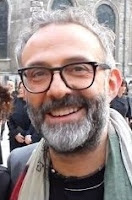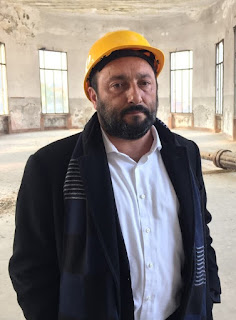Giovanni Battista Piranesi – artist
Genius who put 18th century Rome on the map
Draftsman, printmaker and architect Giovanni Battista Piranesi was born on this day in 1720 in Mogliano Veneto near Treviso in the Veneto. He became famous for his large prints depicting the buildings of Rome, which stimulated interest in Rome and inspired the neoclassical movement in art in the 18th century. Piranesi went to Rome to work as a draftsman for the Venetian ambassador when he was 20. There he studied with some of the leading printmakers of the day. It was during this period that he developed his own, original etching technique, producing rich textures and bold contrasts of light and shadow by means of intricate, repeated bitings of the copperplate. Among his finest early prints are the Prisons - Carceri - imaginary scenes depicting ancient Roman ruins, which are converted into fantastic dungeons filled with scaffolding and instruments of torture. Piranesi later opened a workshop in Via del Corso and created the series of vedute - views - of Rome that established his fame. Among his best mature prints are the series Roman Antiquities (Le antichita romane), Views of Rome (Vedute di Roma) and views of the Greek temples at Paestum. Read more…
__________________________________________________________
Ignazio Boschetto - tenor
Talented singer is known for being the funny guy in Il Volo
Ignazio Boschetto, a singer in the award-winning pop and opera trio Il Volo, was born on this day in 1994 in Bologna in the region of Emilia-Romagna. His Sicilian parents, Vito Boschetto and Caterina Licari, took him back to live in Sicily and he grew up in Marsala in the province of Trapani in the most western part of Sicily. He has said in interviews that from being about three years old he used to sing operatic arias alone in his room, such as La donna e mobile from Rigoletto by Giuseppe Verdi, much to the surprise of his parents. Ignazio could be classed as a lyric tenor, considering the timbre of his voice, which is warm and soft, but strong enough to sing over an orchestra. A complete artist, Ignazio also plays the piano, guitar and drums. When he was 12 he started to take part in festivals and competitions and in December 2007 he reached the finals of the Premio Nave Punica, winning third place among competitors of all ages. The following year he won the 11th Festival della Canzone di Custonaci singing Il mare calmo della sera. In December, when he had turned 13, he won the third edition of the Premio Nave Punica. Read more…
___________________________________________________________
Bernardino Ramazzini - physician
Pioneer in knowledge of occupational diseases, cancer and malaria
The physician Bernardino Ramazzini, often described as the “father of occupational medicine” and responsible also for pioneering work in the study of cancer and the treatment of malaria, was born in Carpi in Emilia-Romagna on this day in 1633. Ramazzini’s tour de force, which he completed at the age of 67, was his book De Morbis Artificum Diatriba - Discourse of the Diseases of Workers - which came to be regarded as a seminal work in his field, the lessons from which still influence practice today in the prevention and treatment of occupational diseases. A student at the University of Parma, Ramazzini was appointed chair of theory of medicine at the University of Modena in 1682 and professor of medicine at the University of Padua from 1700 until his death in 1714. It was while he was in Parma that he began to take an interest in diseases suffered by workers. When he became a departmental head at Modena, he began to study the health problems of workers in a more systematic way. He would visit their workplaces, observe the activities they undertook in their work and discuss their health problems with them. Read more…
________________________________________________________
Francesco Solimena - painter
Neapolitan artist who influenced a generation
Francesco Solimena, a prolific painter in the Baroque style who became one of the wealthiest and most influential artists in Europe, was born on this day in 1657 in Canale di Sereno, a village in Campania about 14km (9 miles) southeast of Avellino. He spent most of his working life in Naples yet his fame spread far beyond and his work was in such demand among his wealthy patrons, including Prince Eugene of Savoy, Louis XIV of France and Pope Benedict XIII, that he acquired a considerable fortune, was given the title of baron and lived in a palace. His workshop became effectively an academy, at the heart of the Naples cultural scene. Among many who trained there were the leading painters Francesco de Mura, Giuseppe Bonito, Corrado Giaquinto and Sebastiano Conca. The Scottish portraitist Allan Ramsay was a pupil in his studio in around 1737-38. Solimena’s own training came initially from his father, Angelo, a revered painter of frescoes, with whom he worked at the cathedral of Nocera in the province of Salerno, and at the church of San Domenico at Solofra, not far from his home village. He often worked in Nocera later in life. Read more…
____________________________________________________________
Feast of Saint Francis of Assisi
Lamps light up Assisi in memory of saint
The city of Assisi in Umbria is today celebrating the Feast Day - la festa - of their famous Saint, Francis - Francesco - who is one of the most venerated religious figures in history. It is the most important festival in the Franciscan calendar as it commemorates Saint Francis’s transition from this life to the afterlife. For two days Assisi is illuminated by lamps burning consecrated oil. Special services are held in the Basilica Papale di San Francesco and the Basilica di Santa Maria degli Angeli. The feast day is also celebrated in other churches all over the world and children are encouraged to bring their pets to be blessed in memory of Saint Francis’s love for animals. Saint Francis was born Giovanni di Pietro di Bernardone in about 1181 in Assisi but he was informally known as Francesco by his family. A theory is that his father, Pietro di Bernardone, a prosperous silk merchant, decided to call his new son Francesco - the Frenchman - because he had been on business in France at the time of the birth. His wife, Pica de Bourlemont, was a noblewoman from Provence, although it was she who chose the name Giovanni. Read more…



























